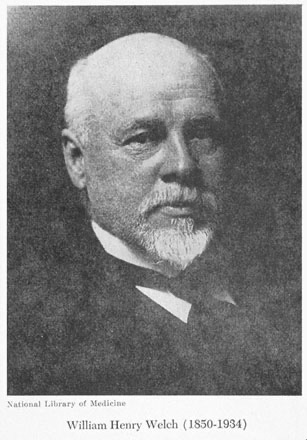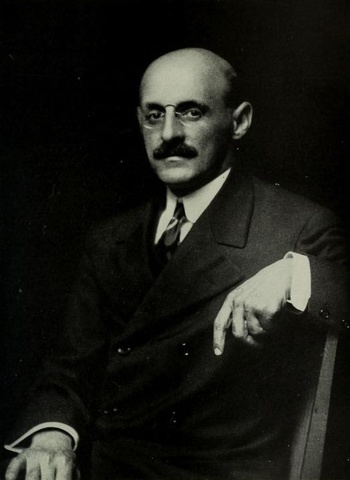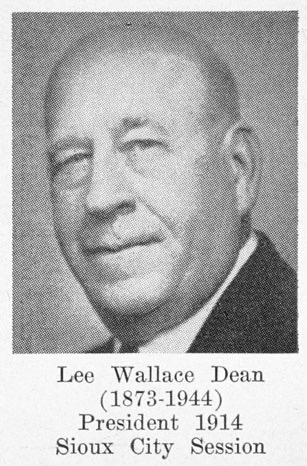Main navigation
Researched and Written by
Dr. Fred Stamler
The year 1910 marked the beginning of an era of great changes in medical education in North America. Abraham Flexner, a 42-year-old former schoolmaster and Johns Hopkins graduate from Lexington, Kentucky, was the chief catalyst of what amounted to genuine educational revolution. He was the author of the book The American College, which so impressed Dr. Henry S. Pritchett, President of the Carnegie Foundation for the Advancement of medical education in the United States and Canada. Although he had never set foot in a medical school before accepting the assignment, Flexner set out in December, 1908, to visit and evaluate all of the 155 "medical schools" in the United States. He finished this Herculean task in a little over a year and one-half, and the results were summarized as Carnegie Foundation Bulletin #4, published in 1910.

In Abraham Flexner’s autobiography, he relates in some detail how he prepared for his seemingly impossible task by reading everything he could find about medical education in Europe and North America and by consulting with medical educators at home and abroad. He relied on the leaders of the Johns Hopkins school, especially William H. Welch, unquestionably the most distinguished and influential American pathologist of his generation. Having thus prepared himself, he promptly devised a system that enabled him to obtain the basic information concerning finances, admission standards, teaching methods, laboratory facilities, hospital and clinic capacity and quality, and general operating standards in the course of a visit lasting a day or so at any school.
The four medical schools then existing in Iowa were visited in April, 1909, and the combined report occupies somewhat less than a page in Carnegie Bulletin #4. None of the four schools received a clean bill of health. To quote from the "General Considerations" portion of the report:

Of the four medical schools in the state, none is ... satisfactory. The osteopathic school ... is a disgrace to the state, and should be summarily suppressed. ... the medical department of Drake University and the homeopathic department of the State University are well intentioned but feeble institutions ... (and) it would be the better part of wisdom to retire from a contest to which the institution is so clearly unequal .... The homeopathic department of the State University has now a small attendance ... (which is) ... destined still further to shrink ... wisdom would therefore counsel (that ... the two medical departments of the State University should be consolidated with special teaching ... for those who desire the homeopathic diploma.
The Medical College of the State University of Iowa received a mixed review, with generally favorable comments concerning the basic sciences. Flexner judged their equipment and instruction to be generally good, with particular praise for the Anatomy Department. He noted a lack of a "sufficient number of skilled assistants" in Pathology and Bacteriology.
The clinical facilities were thought by Flexner to be seriously inadequate. He found the hospital to be too small to provide adequate "teaching material" in medicine, obstetrics, and infectious diseases, but did note that the state had appropriated money for expansion of the hospital. The clinical teaching was found wanting "mainly for lack of proper organization and material."
Flexner noted that "laboratory instructors devote full-time to their work; the clinical teachers are practitioners, some of them non-resident." He noted with disapproval that the Professor of Surgery resided in Sioux City, and the Professor of Gynecology, who was also the Dean of the Medical School, lived in Dubuque. These two men each spent two days per week in Iowa City during the school year.
When Abraham Flexner made his tour of the medical facilities at Iowa City, he was accompanied by University President George E. MacLean and William R. Boyd of Cedar Rapids, Chairman of the finance committee of the University Board of Regents. In a private conversation after completion of the tour, Boyd acknowledged the validity of Flexner’s critical evaluation and responded thoughtfully to suggestions for change. Boyd refused to accept Flexner’s conclusion that the school faced dismal prospects for the future, and expressed his resolve to bring the medical school up to approved standards. This meeting was the beginning of a long association between Boyd and Flexner, marked by mutual respect, trust, and admiration.
The next six years were characterized by considerable dissension in University administration at Iowa City. President MacLean, although judged by history to have been a fine scholar and accomplished leader, acquired opponents who forced his resignation in 1911. His successor, John G. Bowman had no better success, and resigned in 1914. Thomas H. MacBride, the highly respected and eminently qualified head of the Botany Department succeeded Bowman, but retired because of age in 1916.
Throughout the years of unstable University administration, W.R. Boyd retained his position as Finance Chief of the newly formed State Board of Education, and continued his effective efforts to improve medical education in Iowa. The Flexner report had aroused such a storm of protest and denial in medical circles of the state that a return visit was requested. This resulted in an even more critical evaluation given privately to the University President which stimulated the University administration and Board of Education to action. Early efforts were made to improve clinical practice and teaching. Following the resignation of Walter Bierring, Campbell P. Howard was recruited from Johns Hopkins to become full-time Head of Medicine, and C.J. Rowan was brought in from Rush in Chicago as Head of Surgery. He brought with him Howard Beye as Chief Assistant and Nathan G. Alcock as specialist in Urology. Frederick H. Falls from Chicago became Head of Obstetrics and Gynecology.

Lee Wallace Dean became Dean of the school, while retaining his position as Head of Otorhinolaryngology. All of these men were to be full-time medical school faculty, with offices within the hospital complex, and were to limit outside practice to consultation. With the closing of the Drake Medical School, Dr. Arthur Steindler joined the Iowa City faculty as Head of the Orthopaedic Service, which later became a separate department. Dr. Philip C. Jeans of St. Louis joined the faculty as Head of Pediatrics.
Walter A. Jessup became the eleventh President of the University in 1916, and retained that position until 1934. He was a strong and successful leader and administrator who worked harmoniously with W.R. Boyd and George Baker, Head of the Board of Education. Abraham Flexner had continuing contact with these three men for many years, and continued to have the utmost respect for their ideals, competence, and accomplishments.